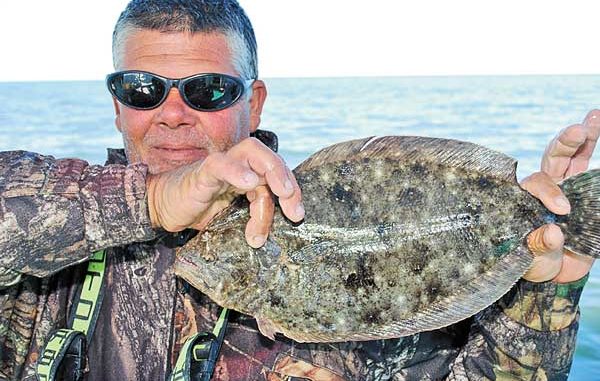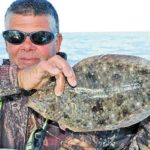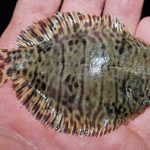
The roots of this annual event run deep.
On a fishing trip last spring, one of the fishermen in a boat with me commented that he sure hoped we would catch some flounder because his wife had asked him specifically to bring some home. The skipper of the boat, a charter captain, grinned broadly and said, “I hear that more times than you can imagine. Women love flounder. I think they are lady-fish.” No matter who likes to eat them, anglers of either gender like to catch them. It can’t be because of their fighting qualities. With the exception of the occasional large one that really resists, many of them passively and obediently swim toward the boat after taking the bait. Aggravatingly enough, at the last minute lots of these open their mouths and let go of the hook before they can be netted.
In Louisiana, “flounder” invariably means the southern flounder, Paralichthys lethostigma. The scientific name literally translates as “parallel fish that forgot its spots.” To most people though, flounder simply means good eatin’.
Four families in the Gulf and Atlantic belong to the group of fishes loosely called flatfishes. Smallest is the sole family with only five members. One of these is the hogchoker, so commonly caught in shrimp trawls. These small round fish are best known for being difficult to scrape off flat surfaces such as picking boxes and boat decks. All soles have their eyes on the right side of their heads.
The tonguefish family has 11 species. All are flat, of course, but they are lance head-shaped instead of being round or oval. One of the most common species of tonguefish in Louisiana is the bay whiff, best known for being just the right size to stick in the meshes of shrimp trawls. Tonguefish have their eyes on the left side of their heads.
The remaining two families are the righteye flounders, Pleuronectidae, and the lefteye flounders, Bothidae. They are named for the side of the head on which their eyes and their body pigment is found.
The righteye flounder family includes only seven species in the Atlantic and Gulf, but one of them is Atlantic halibut. Some of these outsized creatures can reach weights of over 700 pounds. Common only as far south as Massachusetts, a few stragglers are caught as far south as the waters off of New Jersey. The southernmost record for this species is Virginia.
Lefteye flounders, the family to which our protagonist belongs, are the largest of the four, with 30 species. Three of these, the gulf, broad and southern flounders, commonly grow large enough to catch and keep. The gulf flounder is primarily a fish of Florida waters, and is distinguished from the southern flounder by having three noticeable ocellated spots on its dark side. It is usually less than 15 inches long.
The broad flounder is very common offshore of Louisiana, but is primarily a denizen of deep waters. It is seldom encountered by our offshore anglers, who fish mainly at oil and gas platforms and seldom explore the open water bottoms where this fish is found. It differs from the southern flounder by having a broader body, compared to its length, and by being substantially darker, although all flounders can be notorious for color changes.
Three other lefteye flounder species will sometimes reach a size big enough to consider keeping, the three-eye, the ocellated and the shrimp flounders. All are marked by either three or four large bulls-eye spots on their upper sides.
All flounders begin life as bilaterally symmetrical animals, meaning both sides of the fish look alike. At about 16 days after hatching, larval southern flounders settle out of the water column to near the water bottom. By 21 days, they begin to rest on their right sides on the bottom.
At 23 days and at about a half-inch in length, the eye on the right side of the fish begins to migrate to the left side of the animal’s head. By 1 inch in length, both eyes are in place on the left side, and the animal’s left side is fully pigmented and the right side (with rare exceptions) is fully white.
By February, juvenile southern flounders move into estuarine marshlands and tidal rivers. They spend their first year in the nurseries, feeding vigorously and growing.
The following year, they join the fall migration offshore to spawn. As temperatures begin to decline, they begin to stage in large numbers in the lower part of the estuaries near the Gulf of Mexico. Between mid-October and mid-November, they move offshore. Spawning peaks in December.
After spawning season, females will begin to move back into their estuaries, with movement being complete before April. Male flounders, in their short 3 years or so of life, remain in offshore waters and never return to estuaries. Female southern founders may live as long as 20 years and grow to almost 3 feet long. Males seldom exceed 14 inches.
Jerald Horst is author of four books on fish and seafood, including the acclaimed Trout Masters: How Louisiana’s Best Anglers Catch the Lunkers. His latest book, co-authored with his wife Glenda, is The Louisiana Seafood Bible: Crawfish.




